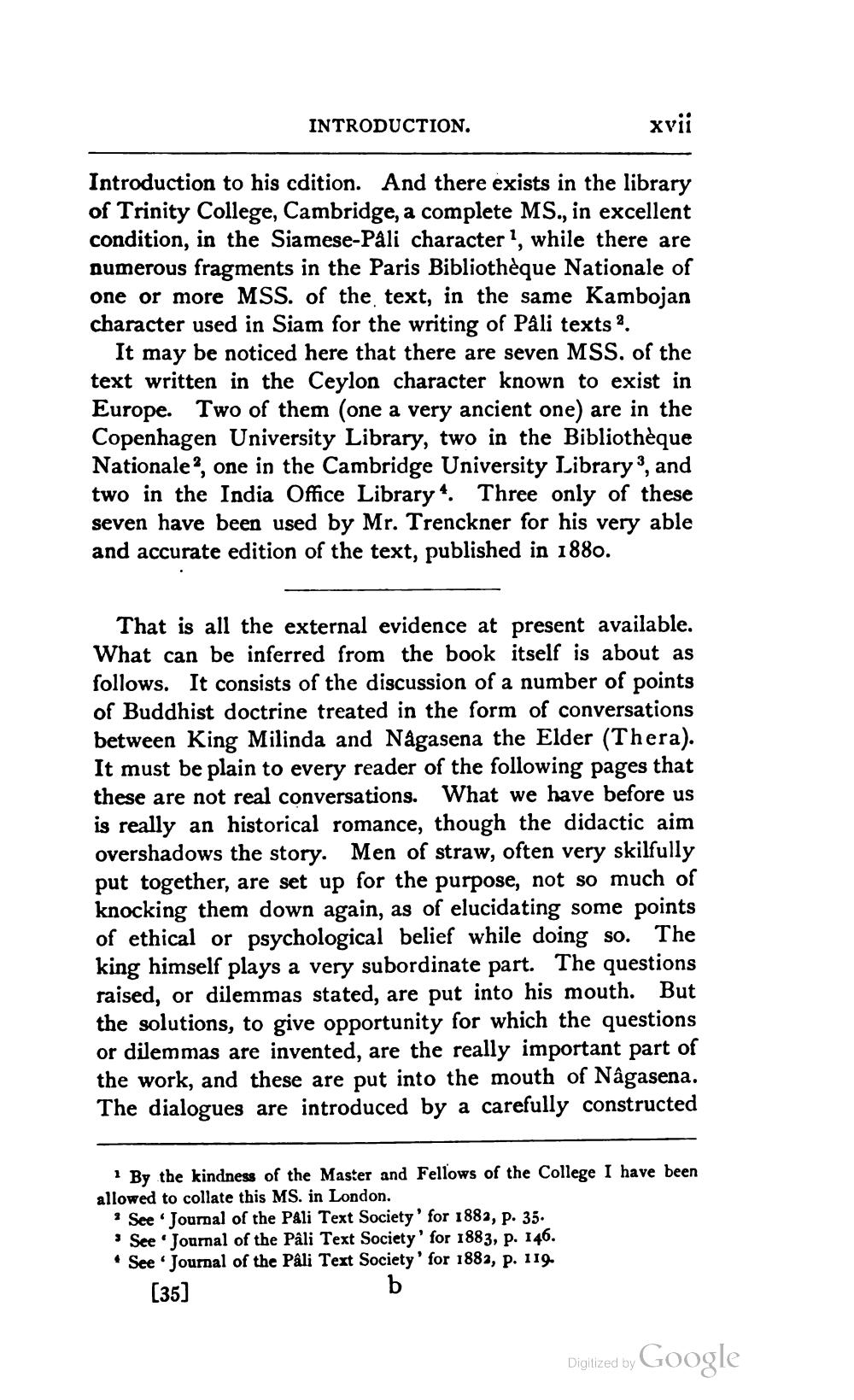________________
INTRODUCTION.
xvii
Introduction to his cdition. And there exists in the library of Trinity College, Cambridge, a complete MS., in excellent condition, in the Siamese-Pali character', while there are numerous fragments in the Paris Bibliothèque Nationale of one or more MSS. of the text, in the same Kambojan character used in Siam for the writing of Pali texts.
It may be noticed here that there are seven MSS. of the text written in the Ceylon character known to exist in Europe. Two of them (one a very ancient one) are in the Copenhagen University Library, two in the Bibliothèque Nationale, one in the Cambridge University Library), and two in the India Office Library 4. Three only of these seven have been used by Mr. Trenckner for his very able and accurate edition of the text, published in 1880.
That is all the external evidence at present available. What can be inferred from the book itself is about as follows. It consists of the discussion of a number of points of Buddhist doctrine treated in the form of conversations between King Milinda and Nagasena the Elder (Thera). It must be plain to every reader of the following pages that these are not real conversations. What we have before us is really an historical romance, though the didactic aim overshadows the story. Men of straw, often very skilfully put together, are set up for the purpose, not so much of knocking them down again, as of elucidating some points of ethical or psychological belief while doing so. The king himself plays a very subordinate part. The questions raised, or dilemmas stated, are put into his mouth. But the solutions, to give opportunity for which the questions or dilemmas are invented, are the really important part of the work, and these are put into the mouth of Nâgasena. The dialogues are introduced by a carefully constructed
1 By the kindness of the Master and Fellows of the College I have been allowed to collate this MS. in London.
* See Journal of the Pali Text Society' for 1882, p. 35. * See Journal of the Pâli Text Society' for 1883, p. 146. . See Journal of the Pâli Text Society for 1882, p. 119.
[35]
Diglized by Google




